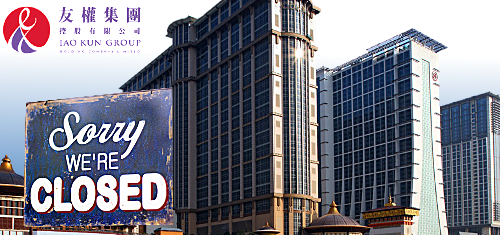 Junket investor Iao Kun Group Holding Company (IKGH) is closing one of its Macau casino VIP rooms due to the market’s ongoing challenges.
Junket investor Iao Kun Group Holding Company (IKGH) is closing one of its Macau casino VIP rooms due to the market’s ongoing challenges.
On Friday, IKGH announced that it was undertaking a comprehensive strategic review of its Macau VIP gaming operations in order to enhance its operating performance. IKGH chairman Lam Man Pou said the review was necessary “given the lack of recovery” in Macau’s VIP market and “expectations that this will continue for the foreseeable future.”
IKGH has an interest in five VIP gaming rooms in Macau but turnover at these rooms fell 47% in the first half of 2016. IKGH now believes that the current volume of rolling chip turnover in Macau “does not warrant the operation of five VIP gaming rooms.”
The most immediate impact of the strategic review is the closure of IKGH’s VIP gaming room at Las Vegas Sands’ Sands Cotai Central and the termination of IKGH’s relationship with King’s Gaming Promotion Ltd. IKGH says the closure should generate annual cost savings of around $750k.
IKGH warned that it “may close an additional 1-2 VIP gaming rooms” following the conclusion of its strategic review “in order to optimize its operating earnings.” The Nasdaq-listed IKGH says it will inform the market of expected cost savings when it decides which rooms are likely to face the axe.
Besides Sands Cotai Central, IKGH has an interest in VIP rooms at Galaxy Entertainment Group’s Galaxy Macau and StarWorld Hotel, plus Melco Crown Entertainment’s City of Dreams and SJM Holdings’ L’Arc Macau.
Like many other junket operators, IKGH has begun shifting its focus beyond the Macau market. The company has struck junket deals with Australian casino operator Crown Resorts and recently decided to take a more direct role in the casino business via its acquisition of South Korea’s Jeju Sun Hotel & Casino.
Macau’s overall casino market ended its 26-month losing streak in August but this was no thanks to the VIP market. Official statistics showed the VIP market shrinking 15.7% in the first half of 2016 but analysts have suggested the actual shrinkage may have exceeded 21%.